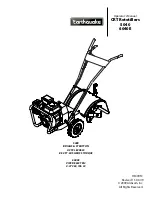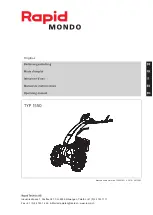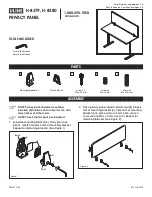
NI 5105 Calibration Procedure
|
© National Instruments
|
5
Test Equipment
Table 3 lists the equipment required for externally calibrating the NI 5105. If you do not have
the recommended instruments, use these specifications to select a substitute calibration standard.
Note
The delay times indicated in this procedure apply specifically to the
Fluke 9500B calibrator. If you use a different calibrator, you may need to adjust
these delay times.
Calibration Procedures
The calibration process includes the following steps:
1.
—Install the device and configure it in Measurement & Automation Explorer
(MAX).
2.
Adjust the Digital Clock Manager (DCM)
—Complete this mandatory adjustment
periodically, even if you do not do a complete calibration.
3.
—Adjust the self-calibration constants of the device.
4.
—Verify the existing operation of the device. This step confirms whether the
device is operating within its specified range prior to calibration.
5.
—Perform an external adjustment of the device that adjusts the calibration
constants with respect to a known reference. The adjustment procedure automatically stores
the calibration date on the EEPROM to allow traceability.
6.
Reverification
—Repeat the verification procedure to ensure that the device is operating
within its specifications after adjustment.
These steps are described in more detail in the following sections.
Table 3.
Required Equipment Specifications for NI 5105 External Calibration
Required
Equipment
Recommended
Equipment
Parameter
Measured
Specification
Signal Generator
Fluke 9500B
Oscilloscope
Calibrator
or
Wavetek 9500
(with high-stability
reference option)
Fluke 9510 Test
Head
DC Accuracy
DC ±(0.025% + 25
μ
V)
into 1 M
Ω
or 50
Ω
Bandwidth
±2% output amplitude
flatness for leveled sine
wave up to 60 MHz
relative to 50 kHz into
50
Ω
Timing
±2 ppm frequency
accuracy
BNC to SMB
adapter
—
—
50
Ω






































